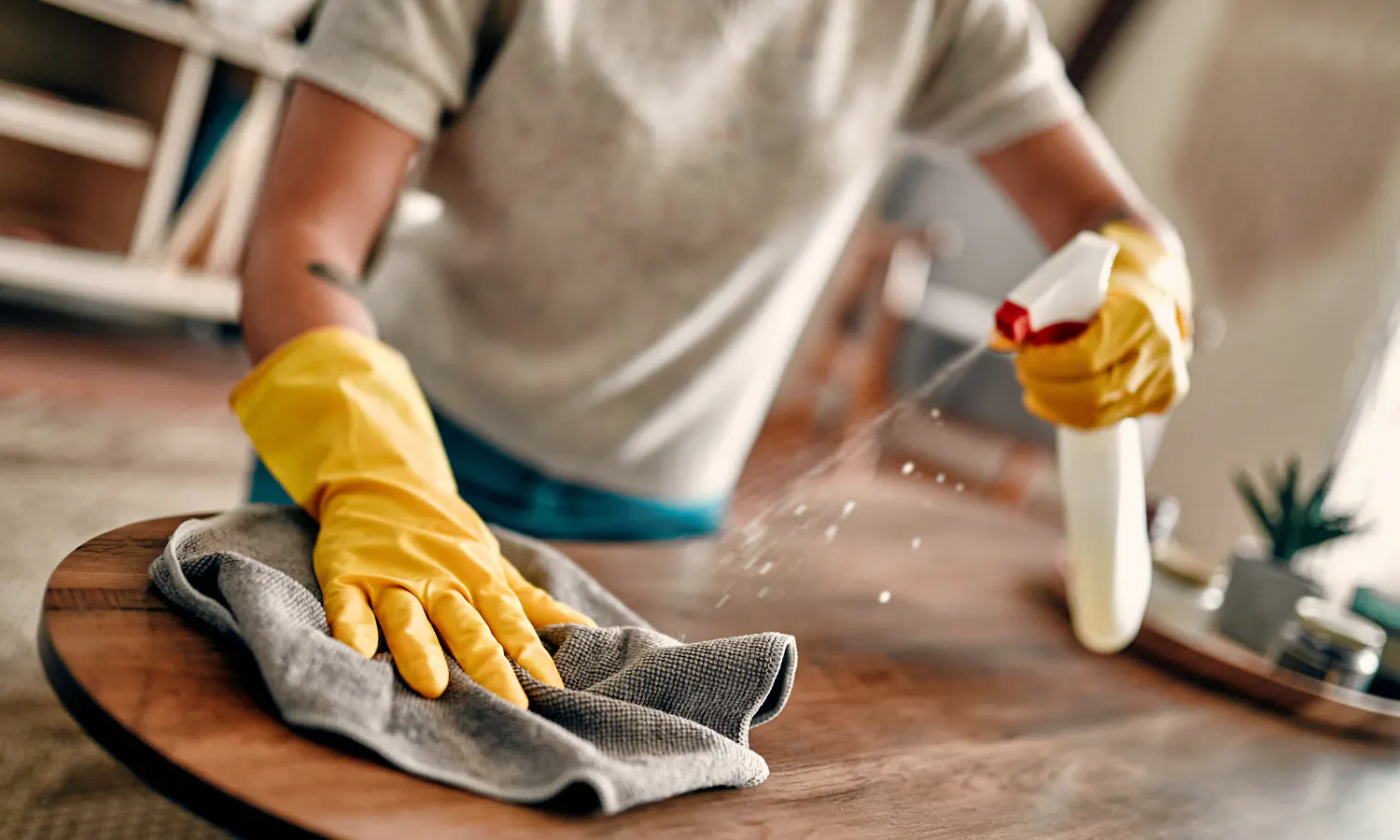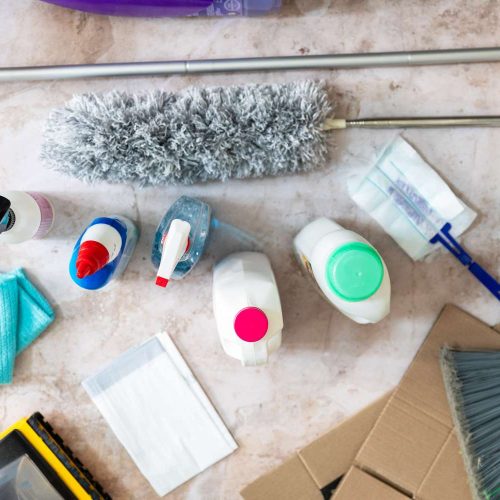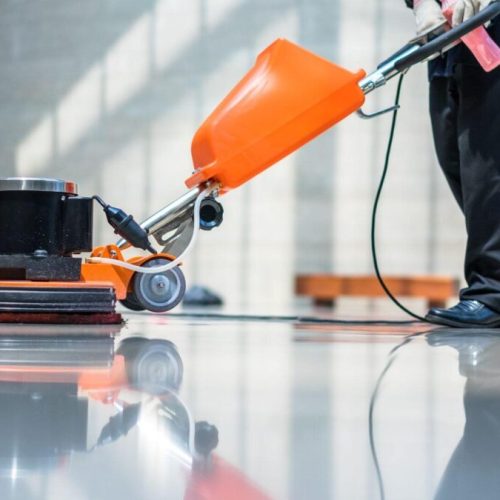Deep cleaning goes beyond the routine tasks of dusting and wiping surfaces. It’s essential for eliminating accumulated dirt, germs, and stains that regular cleaning often misses. This process brings improved health, comfort, and organization to your home while preserving materials and extending the lifespan of household items. Below, we explore effective tips and techniques for removing the toughest dirt in various areas of the house, along with detailed guidance to make the process easier.
- Planning: Start with a Checklist
Before starting a deep cleaning session, it’s important to plan. A checklist helps organize tasks and ensures that no area is overlooked. To make the job more efficient, divide tasks by rooms and determine the order of priority. Consider these points:
- Kitchen: Stove, oven, refrigerator, pantry, and tiles.
- Bathroom: Grout, shower doors, faucets, toilet, and glass surfaces.
- Bedrooms: Mattresses, curtains, wardrobes, and carpets.
- Living room: Sofas, light fixtures, rugs, and electronics.
Set realistic goals and break the work into stages. A good tip is to dedicate a day or weekend to each room, depending on the extent of cleaning required.
- Essential Tools and Products
Deep cleaning requires the right tools and products. Choosing the appropriate materials not only makes the job easier but also increases cleaning efficiency. Here is a list of must-haves:
- Brushes and sponges: Different sizes help clean corners, grout, and textured surfaces.
- Degreasers: Essential for removing grease from kitchens and appliances.
- Steam cleaner: Excellent for disinfecting surfaces and removing embedded dirt from carpets and upholstery.
- White vinegar and baking soda: Versatile household products that disinfect, eliminate odors, and remove stains.
- Microfiber cloths: Ideal for delicate surfaces as they don’t leave lint.
- Vacuum cleaner with attachments: Helps reach corners and remove dust from hard-to-reach areas.
- Effective Techniques by Room
For effective deep cleaning, it’s important to know specific techniques for each type of dirt and area. Below are the best practices for different parts of your home.
Kitchen
- Stove and oven: Mix baking soda and water to form a paste. Apply it to greasy surfaces and let it sit for 30 minutes. Then scrub with a sponge and wipe with a damp cloth. For tougher stains in the oven, spray white vinegar.
- Refrigerator: Empty completely, discard expired food, and clean shelves with a solution of warm water and mild detergent. Finish by wiping with a dry cloth.
- Tiles and grout: Mix white vinegar and warm water. Use an old toothbrush to scrub stained areas, rinse, and dry thoroughly.
Bathroom
- Shower doors: Prepare a solution with equal parts white vinegar and mild detergent. Spray onto the glass, let it sit for 15 minutes, and scrub with a soft sponge. Finish by rinsing and drying with a microfiber cloth.

- Grout: Mix baking soda with hydrogen peroxide and apply it to stained grout. Scrub with a brush and rinse thoroughly.
- Faucets and metals: Use a vinegar solution to dissolve water and limescale stains. Wipe dry with a cloth to add shine.
Living Room
- Upholstery and sofas: Vacuum thoroughly to remove dust. For stains, apply a mixture of mild detergent and warm water. Gently scrub with a soft cloth, being careful not to soak the fabric.
- Rugs: Sprinkle baking soda over the surface and let it sit for 15 minutes. Then vacuum to refresh fibers and eliminate odors.
- Electronics: Clean screens and surfaces with a slightly damp microfiber cloth, avoiding harsh chemicals that could damage devices.
Bedrooms
- Mattresses: Vacuum both sides of the mattress. For odors, apply baking soda and let it sit for a few hours before vacuuming again. For stains, use a solution of white vinegar and warm water.
- Curtains: Wash or vacuum regularly to prevent dust and allergens. Opt for hand or dry cleaning for delicate fabrics.
- Wardrobes: Empty the wardrobe and wipe shelves with a damp cloth. Use dehumidifiers to prevent mold and odors.
- Additional Tips for Tough Dirt
- Grease stains: Scrub with a degreasing detergent before washing.
- Rust: Apply lemon juice mixed with salt to the stain, let it sit, and gently scrub with a sponge.
- Glass and mirrors: Clean with a solution of vinegar and water, then dry with paper towels or a microfiber cloth to avoid streaks.
- Mold: For mold-affected surfaces, use a diluted bleach solution, ensuring proper ventilation in the area.
- Prevention: The Key to Less Work in the Future
Good maintenance is key to avoiding frequent deep cleaning sessions. Consider:
- Cleaning spills and stains immediately to prevent them from setting.
- Vacuuming carpets and rugs weekly.
- Degreasing appliances after use.
- Performing light and frequent cleaning in high-traffic areas.
Conclusion
Deep cleaning can be labor-intensive, but with the right tools and techniques, it’s possible to transform your home, leaving it cleaner, healthier, and more comfortable. Additionally, it helps preserve materials and improve the well-being of residents. Try these tips and see how satisfying it is to tackle those tough dirt spots that disrupt your daily life!




